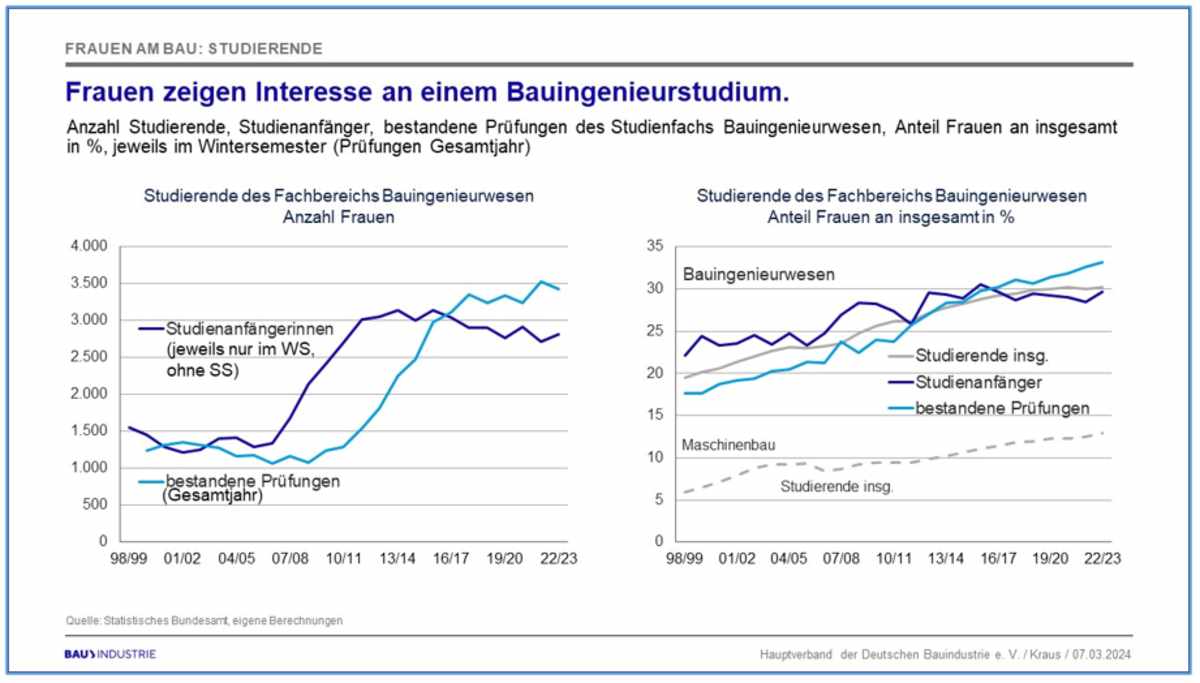Civil engineers shape the architecture of the modern world - they design and realise buildings that characterise our cities and shape our infrastructure. For example, Germany currently has an enormous need to repair its dilapidated bridges - there is talk of more than 5,000 bridges that need to be renovated or rebuilt as quickly as possible. At the same time, there is extremely positive news from Germany - climate-positive concrete is currently paving the way for sustainable construction - because concrete is a real climate killer, accounting for a good 7-8 percent of global CO2 emissions.
Climate-positive concrete that offset CO₂ emissions through innovative materials and processes are not only a ground-breaking innovation, but also clear proof of the construction industry's efforts in terms of sustainability. These environmentally friendly solutions symbolise the progressiveness and influence that civil engineers can have in shaping a more sustainable future.
However, despite these exciting developments, the construction industry is also facing the urgent challenge of a skills shortage. The demand for qualified civil engineers is growing, while at the same time the number of available talent is insufficient to meet demand. This ongoing shortage of professionals poses a serious challenge for the future of construction.
In this article, we will therefore ensure you know how to secure civil engineering talent for your projects and what strategies are necessary to succeed in an increasingly competitive market.
Status quo construction industry
According to the latest publications from Bauindustrie.de regarding the skilled labour situation in the main construction trades, the number of available professionals in the main construction industry continues to lag behind demand. And it is not just the shortage of skilled labour that is a problem, but also the existing skilled labour situation itself. The decline in the number of qualified workers and the failure to secure new recruits pose serious challenges for the industry. This generally leads to an increased workload for existing employees and can affect the quality and efficiency of construction projects.
In addition, the industry is characterised by an increasing need to diversify and integrate new talent. Here too, Bauindustrie.de points out that despite efforts to increase diversity, particularly by promoting female civil engineers, the proportion of female professionals in the construction industry is still low. This represents a missed opportunity that has the potential to bring fresh perspectives and innovation to the industry.

A look at positive developments
Despite these challenges, there are also encouraging developments that give hope and point the way to a positive turnaround. The construction industry is increasingly benefiting from change, particularly through the increased adoption of modern technologies and sustainable building practices as described above. These advances not only offer solutions to existing problems, but also create new opportunities for professionals.
Another example of progress is the increasing integration and development of Building Information Modelling (BIM) and other digital technologies that are advancing the planning and construction process. These innovations facilitate coordination and efficiency on construction sites and make the profession of civil engineer increasingly attractive and varied.
In addition, the commitment to greater diversity and inclusion continues to be intensified. The industry is seeing an increasing number of initiatives aimed specifically at attracting both more women and younger talent to the construction industry. Such measures help to make the profession more of interest to a broader target group and close the skills gap.
Despite the current challenges in the construction industry, there are promising developments and innovative approaches that can bring about positive change. These include 5D BIM, which we will be focussing on next.
5D BIM as a future prospect
Modern technologies and innovative approaches offer new opportunities for the industry. The introduction of 5D Building Information Modelling (BIM), which is regarded as a pioneering technology, is particularly noteworthy.
5D BIM is revolutionising the construction process by integrating additional dimensions of time and cost into traditional 3D modelling. This technology enables detailed planning and control of projects by providing real-time analyses of schedules and budgets. Furthermore, 5D BIM improves project coordination and significantly reduces the risks of delays and cost overruns. These efficiency gains and increased transparency make the civil engineering profession not only more exciting, but also more attractive to young talent.
This brings us to the talent acquisition and retention strategies that help companies find and retain civil engineers for their projects.
Strategies for recruiting civil engineers
In our previous article, we discussed recruiting strategies for mechanical engineering. These are:
- Cooperation with universities
- Attractive working conditions plus purpose & responsibility
- Use of technology in recruiting
- Strong employer branding
These are also effective in civil engineering. We have listened to two recent WDR programmes on the subject - these support our findings:
What stands out here is the cooperation with universities. This also makes sense, as it is common to specialise during your studies. After all, there are many opportunities for civil engineers in a wide variety of fields. This is where companies come in to steer young talent in the right direction.
According to a student survey, attractive working conditions such as salary drive most graduates into the private sector - only 3 out of 56 students want to work in the public sector. The image of public authorities is not good, which is also due to a lack of promotion opportunities. This is where the private sector scores.
On the other hand, the authorities can score highly in terms of more peace and security. Better (regulated) working hours also mean that private life is better protected. It is therefore not surprising that many young people are more likely to embark on the "adventure" of the private sector.
Good companies organise early mentoring and bring teams together at universities. Mentoring by older employees also takes place at an early stage and is targeted at individuals.
Conclusion
The construction industry faces the challenge of adapting to the new realities while building on its strengths. The implementation of 5D BIM and other technological advances offer opportunities to optimise the construction process and further develop the civil engineering profession. Companies need to offer proactive recruitment strategies and modern working conditions, that much is certain in the current climate of skills shortages. This is the only way they can successfully position themselves in the competition for the best talent and secure the future of their projects.











.png)




